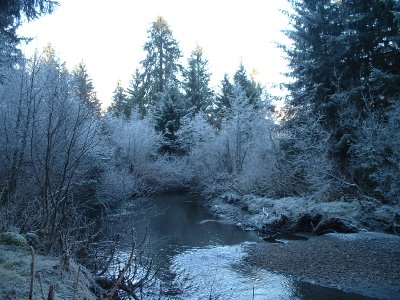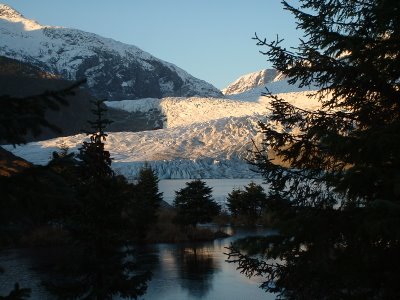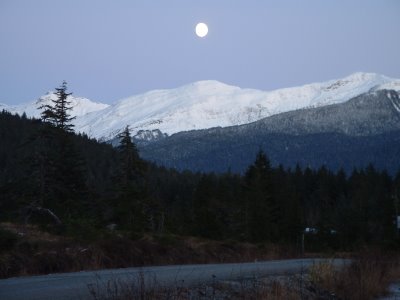 Date: Nov. 5
Date: Nov. 5Total mileage: 29.0
November mileage: 113.4
Temperature upon departure: 21
I took roadie out this morning for a spin across Juneau. It was a great morning for a cross-town ride, with the sun beating down on streets so dry that the salt streaks crackled, and so deserted that I heard little else. People for the most part seemed huddled in their houses, with the exception of a massive gathering of ice skaters on the (barely) frozen Twin Lakes. As they swirled and scuffed the blinding glare of the transparent surface, I realized I could look right through the ice and see lake grass swaying beneath them. Those skaters are truly brave pioneers of the early winter, I thought. And we're all in this together.
I realized that today was the first time - ever - that I have taken out my road bike in below-freezing temperatures. That in itself is a daunting endeavor, because even the smallest streaks of black ice can take those skinny tires down without even flinching. But today was just cold and dry enough to ensure crunchy roads, and I was feeling fast.
I tried a different sort of cold-weather cycling ensemble today because I
- 1 pair fleece pajama bottoms that I
- 1 ratty old polyester T-shirt
- 2 fleece jackets, one that was purchased at The Gap and another that was a Grand Canyon souvenir
- 1 pair ski mittens, no liners
- Balaclava, purchased from Nashbar for $5.99
- 2 pairs cotton (gasp) socks
- 1 pair winter hiking boots (full disclosure: these boots are rated to -20, although I think that rating only applies if the wearer is actually walking)
That lack of exterior shells made for really good moisture circulation, and even though I was working fairly hard, I didn't retain much sweat. The double polar-fleece layer provides a decent windblock even at speeds of 20 mph and temperatures in the low 20s. Feet are always the hardest part of the body to keep warm on a bike, but lacking good insulated shoes, wool and/or neoprene socks can provide plenty of warmth. And if that fails, you can get off your bike and walk until your feet warm up.
So here's my challenge to you: If you think you might be interested in cycle commuting during the winter but don't want to drop your entire PFD check on a bunch of new clothing, try experimenting with the stuff you have. Most people who live in a cold climate own cold-weather gear; it's just a matter of figuring out what works best for you.
Sweat a lot? Better layer up. Anticipating a wet snowstorm? Break out that old ski bib that's been in your closet since 1987. Own anything made of wool? Great. Use it. Socks especially. Avoid cotten, but recognize that as long as you're not soaking your shirt through and through with sweat or precipitation, it has the same power to keep you warm as the latest polypropylene blend (Still, avoid it, though, because you can and will sweat. Wet cotten is like wearing an icicle suit.) Look at the labels on the clothes that you no longer wear, the ones that have been abandoned to closet rot. Those nylon dress pants wick moisture away like you wouldn't believe. Polyester makes a great base layer. Maybe your dad has an old leisure suit stashed in the basement that you could substitute for your usual NYU sweats. Over it all - coat, gloves, hat. Everyone owns those things.
There's a lot of positive things to be said about having a $700 Gortex coat and N.E.O.S., but it's my unpopular opinion that as long as you own winter clothing, you can be a winter cyclist.
Just be creative.









